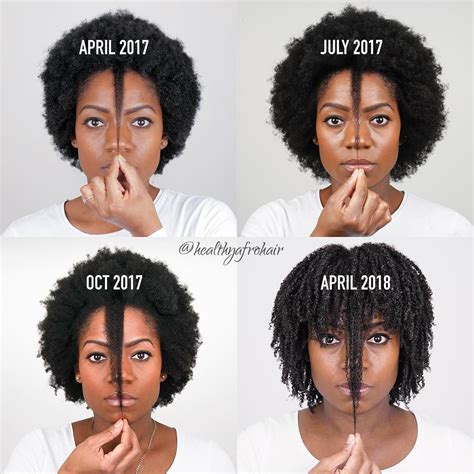For centuries, Black women’s hair has been the subject of scrutiny, admiration, and discrimination. From the ancient Nile Valley to the modern-day salon, Black women’s hairstyles have evolved with time, reflecting their culture, creativity, and the challenges they have faced.

Ancient Roots and Cultural Significance
The earliest evidence of hair care practices among Black women dates back to the Nile Valley around 10,000 years ago. Archaeological findings reveal that ancient Egyptians used combs, oils, and adornments to style their hair into intricate braids and headpieces. Hair was seen as a symbol of beauty, power, and social status.
Around 7,000 years ago, braiding emerged as a prominent hair care practice among Black women in Africa. Braids served practical purposes, protecting hair from harsh environmental conditions and facilitating growth. They also became symbols of identity and cultural connection, signifying different tribes and social groups.
The Transatlantic Slave Trade and Its Impact
The transatlantic slave trade brought an estimated 50,000,000 Africans to the Americas, where their hair became a potent symbol of enslavement. Enslaved women were often forced to have their hair cut or styled in a way that made them appear less attractive or threatening to their masters.
Throughout American history, over 100 laws were enacted that discriminated against Black hair. These laws prohibited certain hairstyles, such as braids and cornrows, in schools, workplaces, and public spaces. They sought to maintain the appearance of white superiority and control over Black people’s bodies.
The Civil Rights Movement and Hair Liberation
During the Civil Rights Movement of the 1960s, Black women began to embrace their natural hair as a symbol of pride and self-acceptance. The Black Power Movement and the Natural Hair Movement encouraged women to wear their hair in its natural state, challenging Western beauty standards and societal norms.
The 1970s saw the rise of the Afro and the Jheri Curl, two iconic hairstyles that became symbols of Black identity and liberation. The Afro, with its voluminous and natural shape, represented pride and a rejection of Eurocentric beauty standards. The Jheri Curl, with its loose, springy coils, became a statement of individuality and style.
Contemporary Trends and Innovations
In recent years, protective hairstyles such as box braids, cornrows, and weaves have become increasingly popular among Black women. These styles help to protect natural hair from damage, while also creating versatile and stylish looks. Natural hair care has also gained traction, with a growing focus on using natural products and embracing the unique qualities of different hair textures.
The 2020s have witnessed a growing embrace of diversity and inclusivity in the beauty industry. Black women are now represented in a wider range ofヘア styles, hair care products, and media representations. The focus has shifted towards celebrating the beauty and uniqueness of all hair textures, breaking down societal stereotypes and empowering women of all races and backgrounds.
Common Mistakes to Avoid When Styling Black Women’s Hair
1. Using Harsh Products: Avoid using products that contain harsh chemicals or sulfates, as they can strip natural oils and damage hair.
2. Over-Brushing: Excessive brushing can cause breakage and damage to delicate hair strands. Use a wide-tooth comb or a detangling brush for gentle detangling.
3. Neglecting Moisture: Black hair tends to be drier than other hair types. It’s crucial to hydrate hair regularly with moisturizers, leave-in conditioners, and hair masks.
4. Heat Damage: Heat styling tools can cause significant damage to hair. Use heat protectant sprays and limit the use of hot tools to prevent breakage and frizz.
Conclusion
Black women’s hair is a powerful and multifaceted expression of their culture, history, and identity. From the intricate braids of ancient Egypt to the contemporary styles of today, Black women’s hairstyles have evolved with time, reflecting their resilience, creativity, and the struggles they have faced. By embracing the beauty and uniqueness of all hair textures, we can create a more inclusive and empowering society for all.
Tables
Table 1: Key Moments in Black Women’s Hair History
| Year | Event | Significance |
|---|---|---|
| 10,000 BCE | Afro-combing and adornments | Early hair care practices in the Nile Valley |
| 7,000 BCE | Braiding | Protective and symbolic hairstyles |
| 16th-19th centuries | Transatlantic slave trade | Hair used as a weapon of control |
| 1960s | Black Power Movement and Natural Hair Movement | Embrace of natural hair as a symbol of pride |
| 1970s | Afro and Jheri Curl | Iconic hairstyles of Black identity and liberation |
| 2000s | Protective hairstyles and natural hair care | Focus on protecting and nourishing natural hair |
| 2020s | Diversity and inclusivity | Celebration of all hair textures and styles |
Table 2: Hairstyles Worn by Black Women
| Hairstyle | Description |
|---|---|
| Braids | Intricate cornrows, box braids, and twists |
| Afro | Voluminous and natural shape |
| Jheri Curl | Loose, springy coils |
| Weaves | Hair extensions used to create length and volume |
| Protective styles | Hairstyles that protect natural hair from damage |
Table 3: Black-Owned Hair Care Brands
| Brand | Products |
|---|---|
| Mielle Organics | Natural hair care products |
| The Mane Choice | Hair care products for all textures |
| Camille Rose | Hair care products for curly and coily hair |
| Oyin Handmade | Natural hair care products |
| Eden BodyWorks | Hair care products for all hair types |
Table 4: Hair Care Tips for Black Women
| Tip | Benefit |
|---|---|
| Use natural hair care products | Nourishes and protects hair |
| Hydrate regularly | Prevents dryness and frizz |
| Detangle gently | Prevents breakage and damage |
| Use heat styling tools sparingly | Minimizes damage |
| Embrace your natural hair texture | Reduces styling stress and promotes healthy hair growth |
